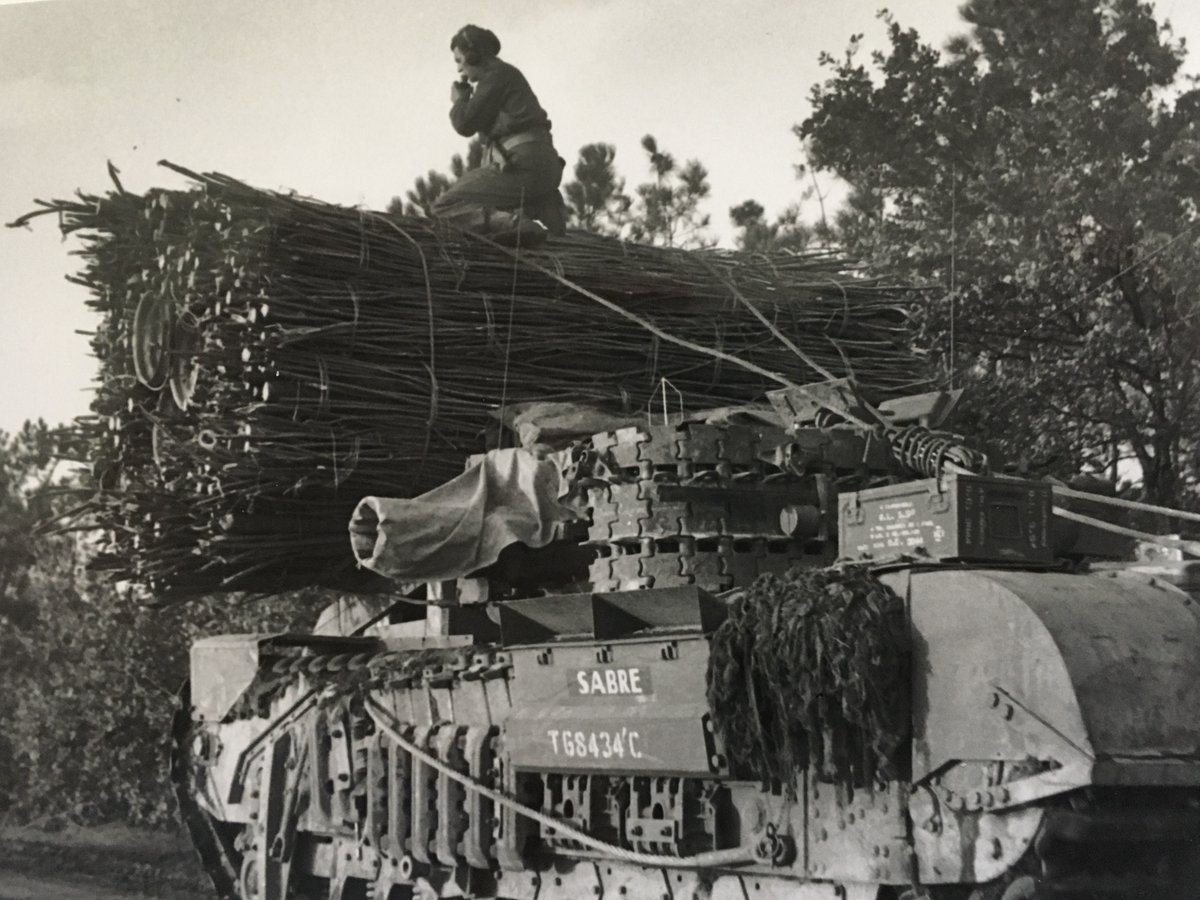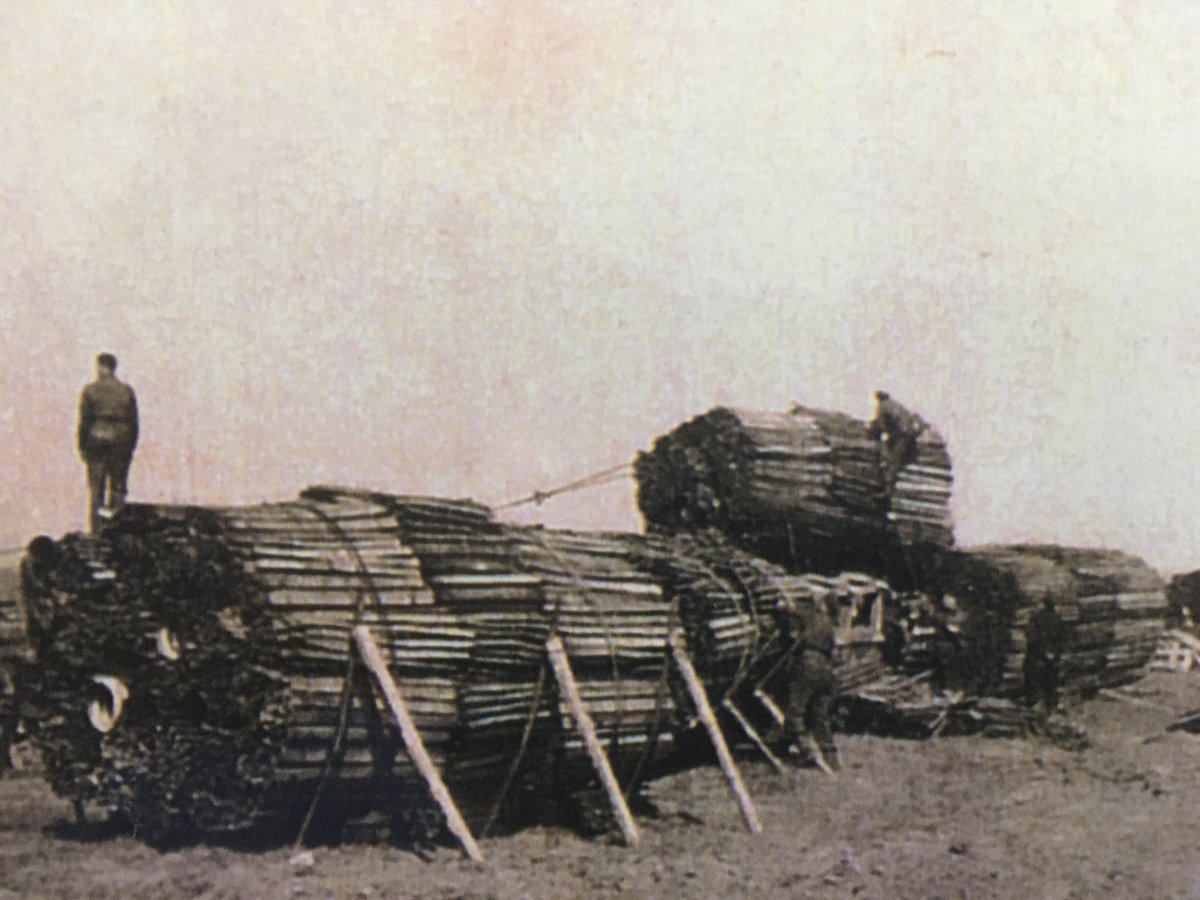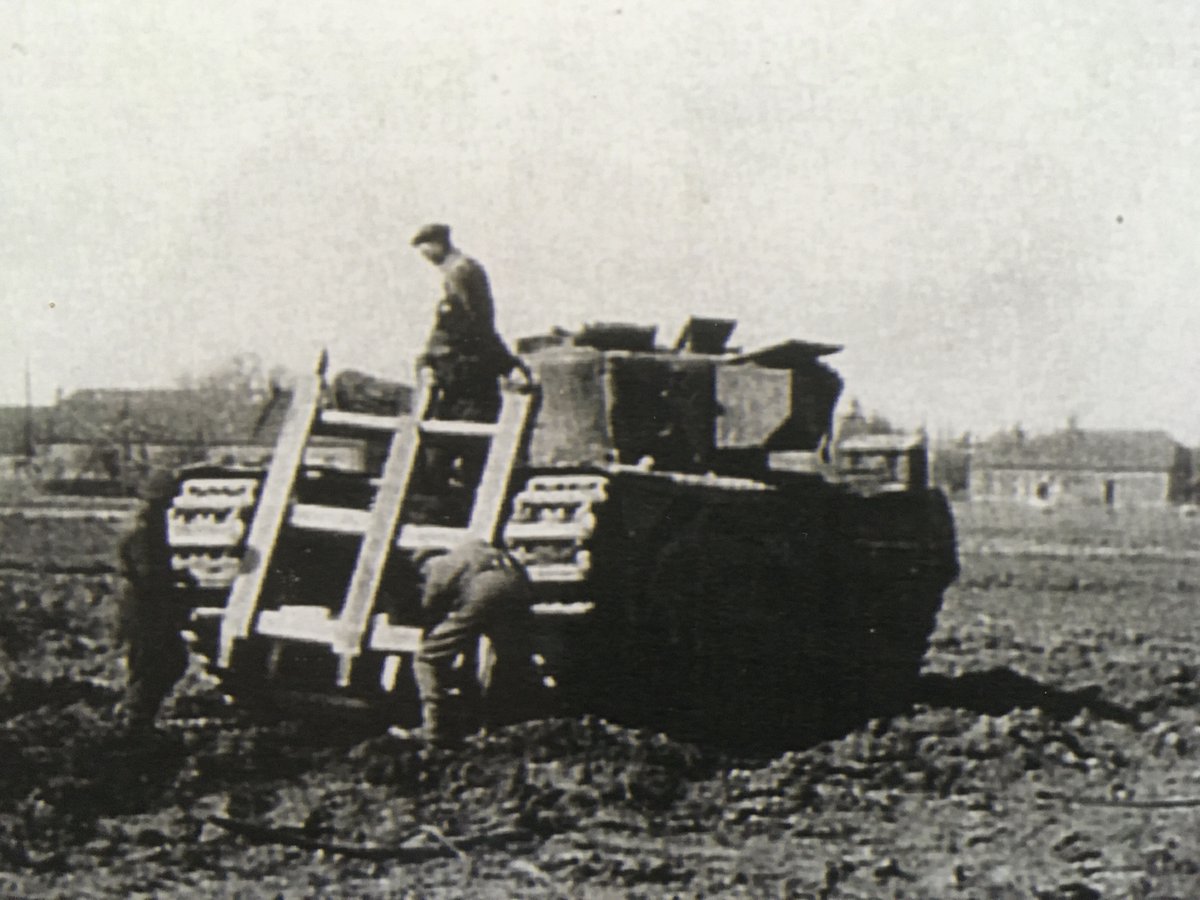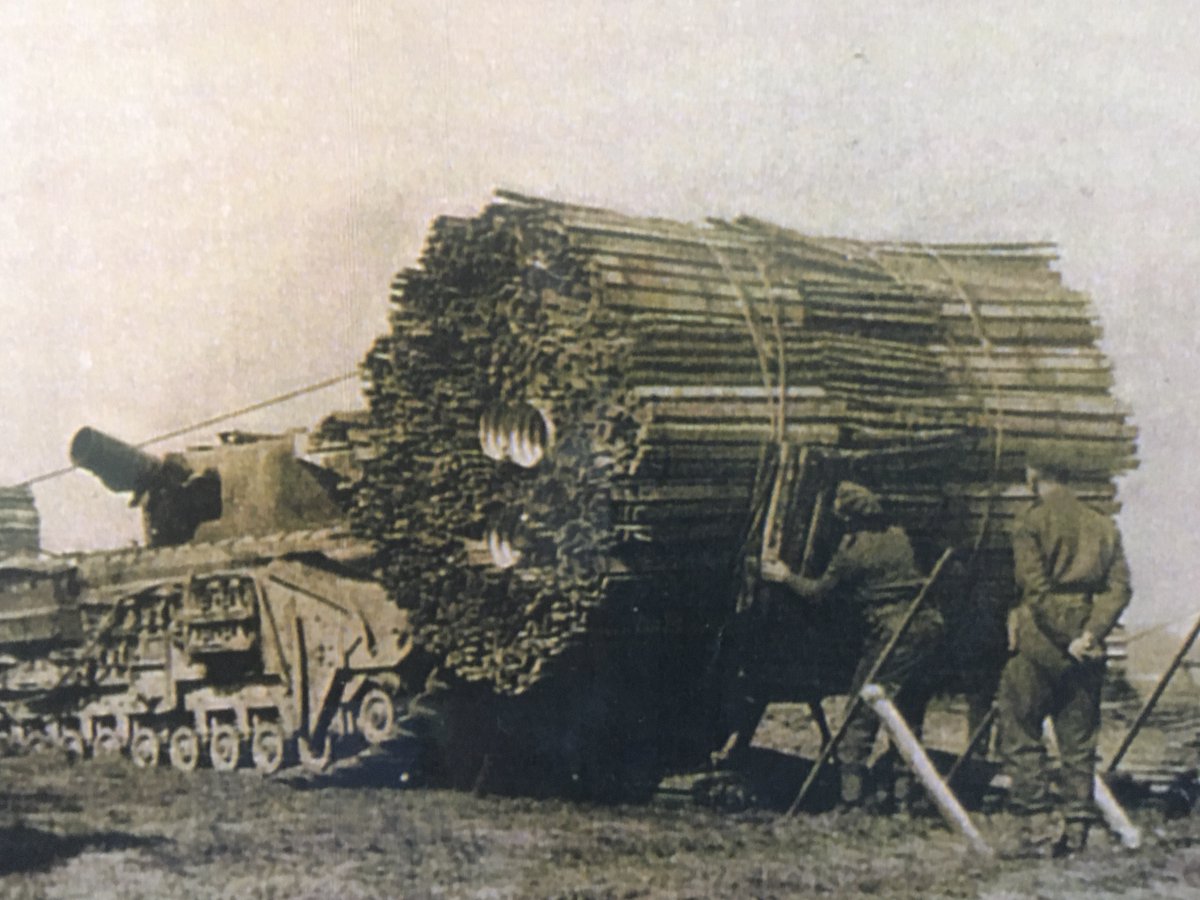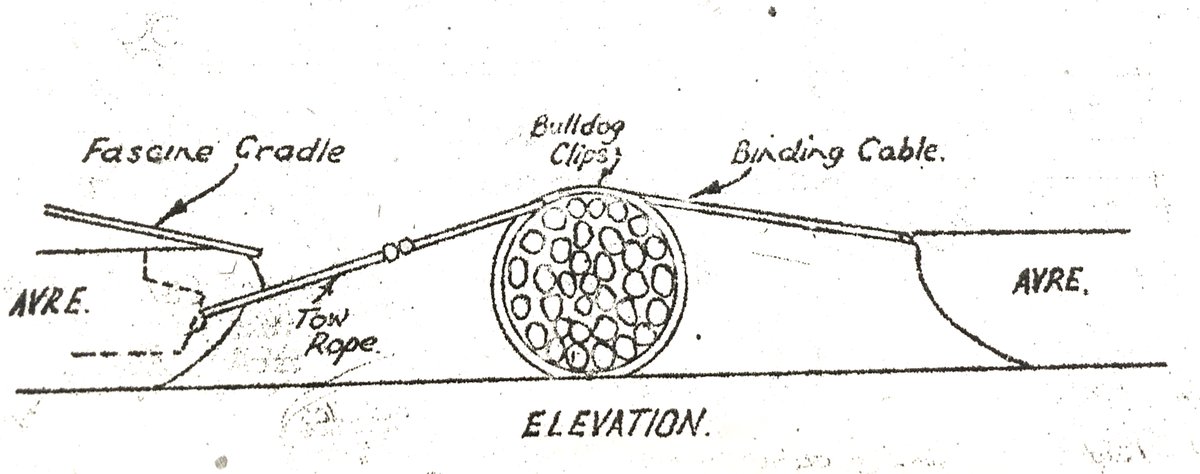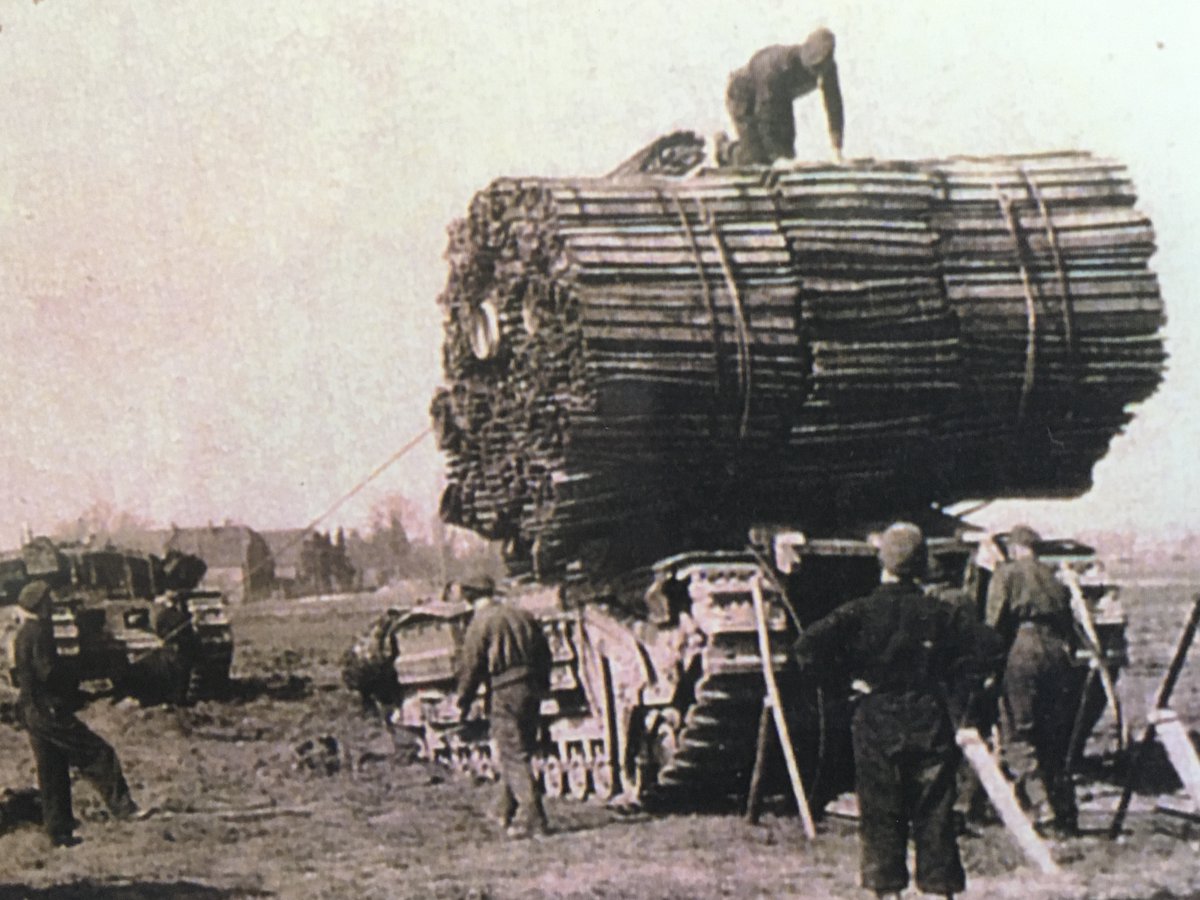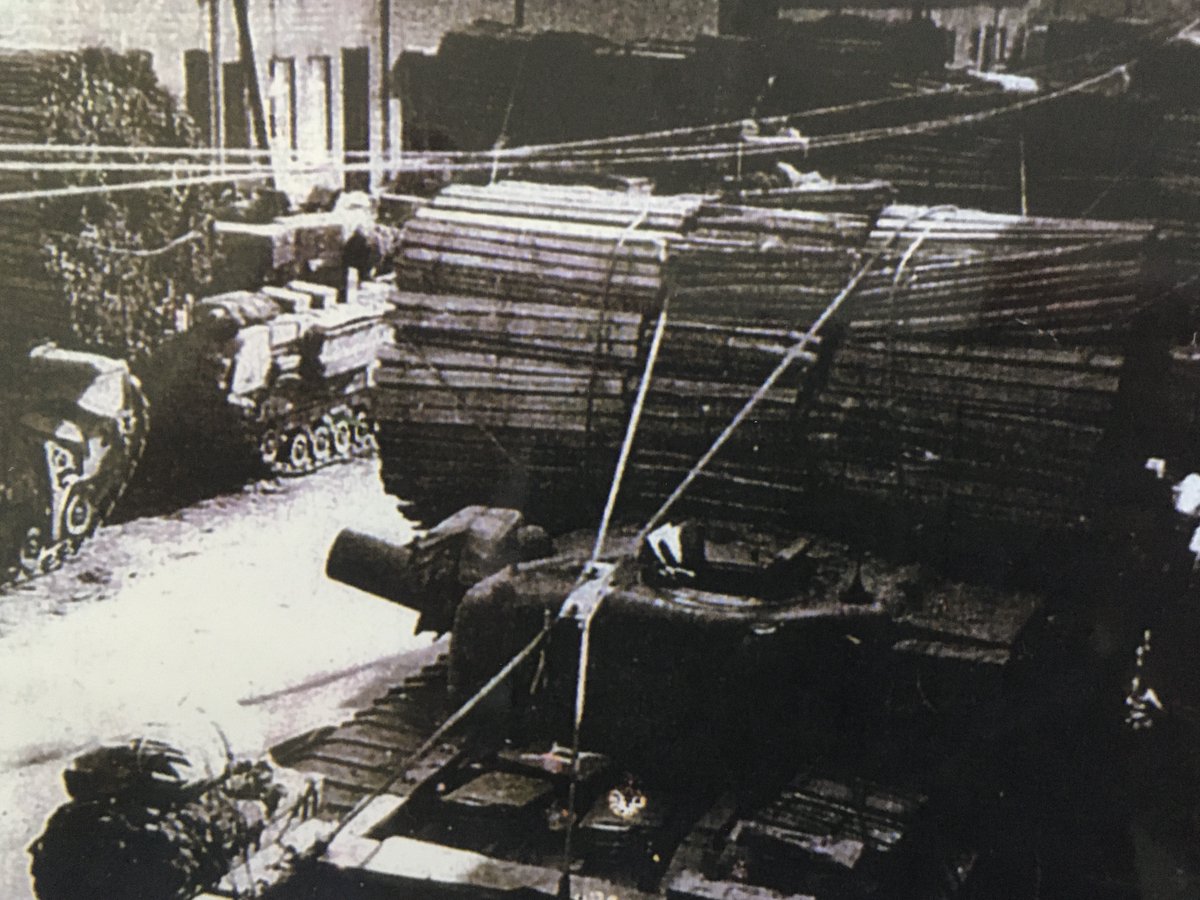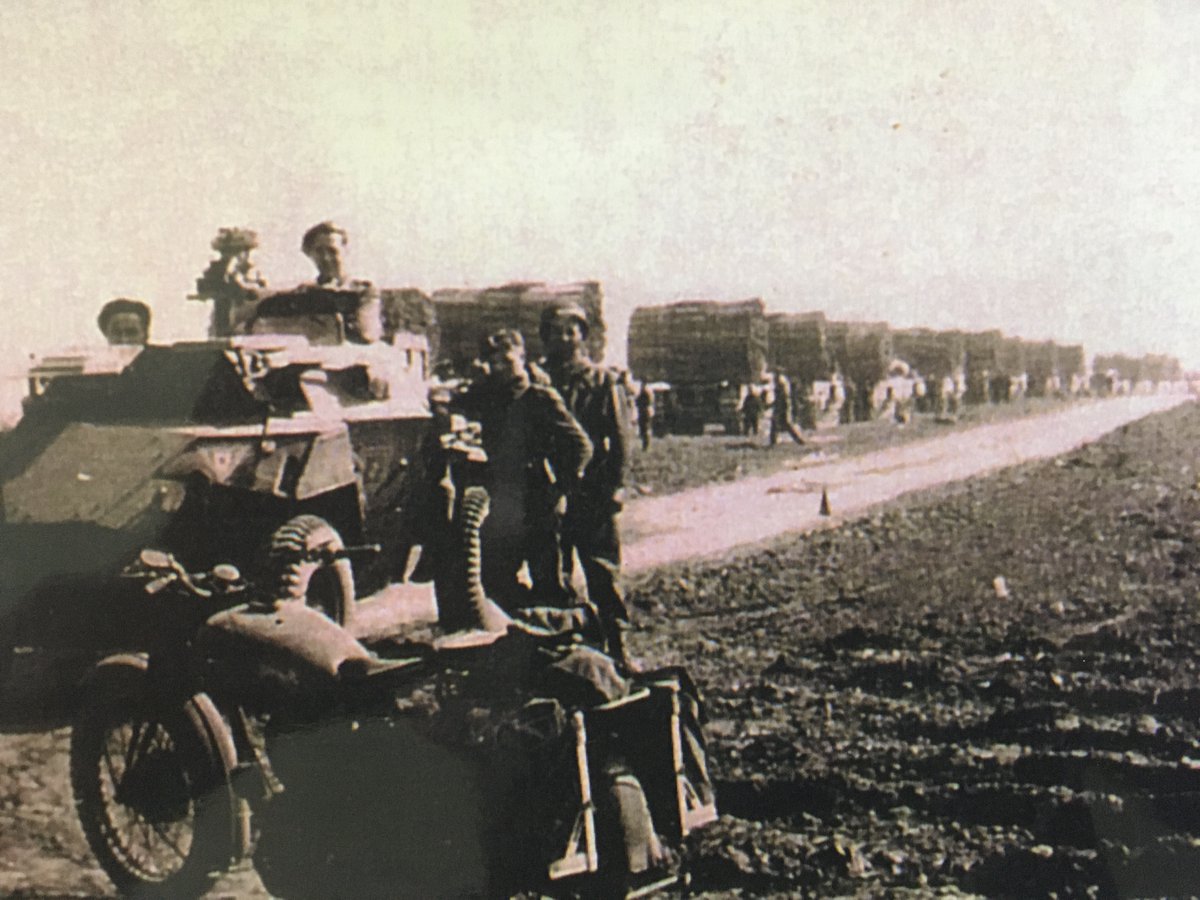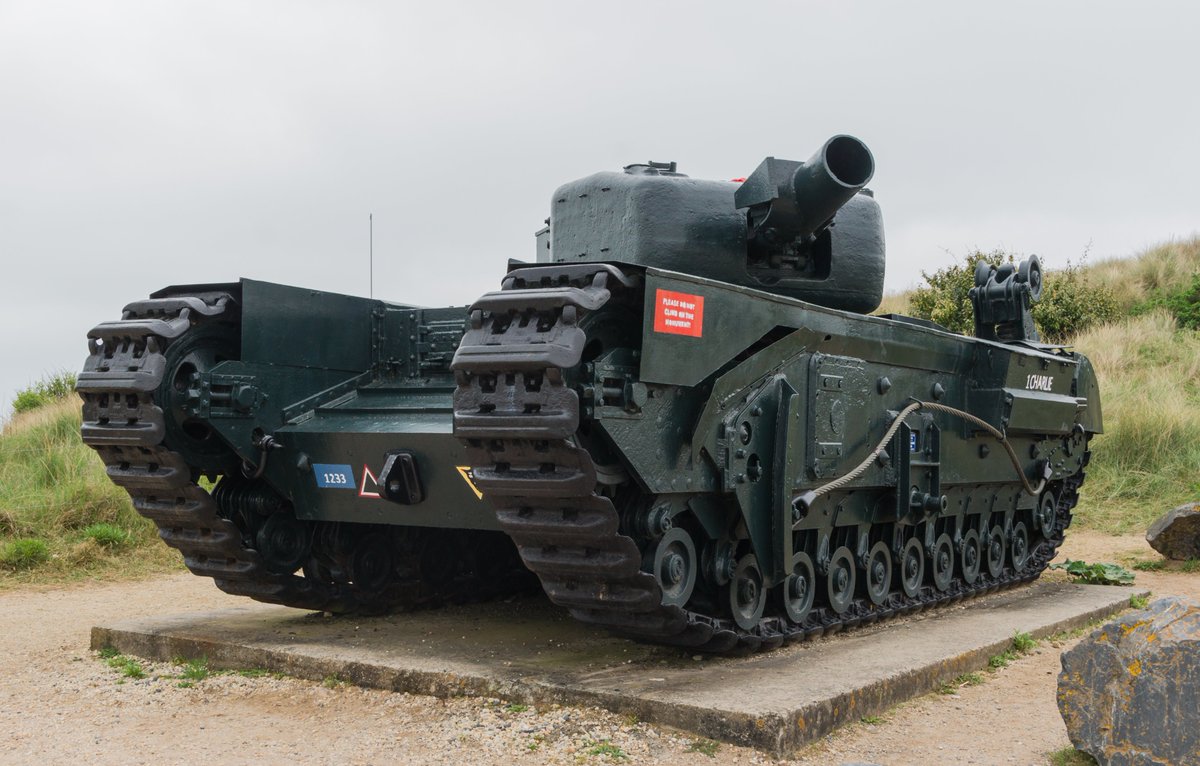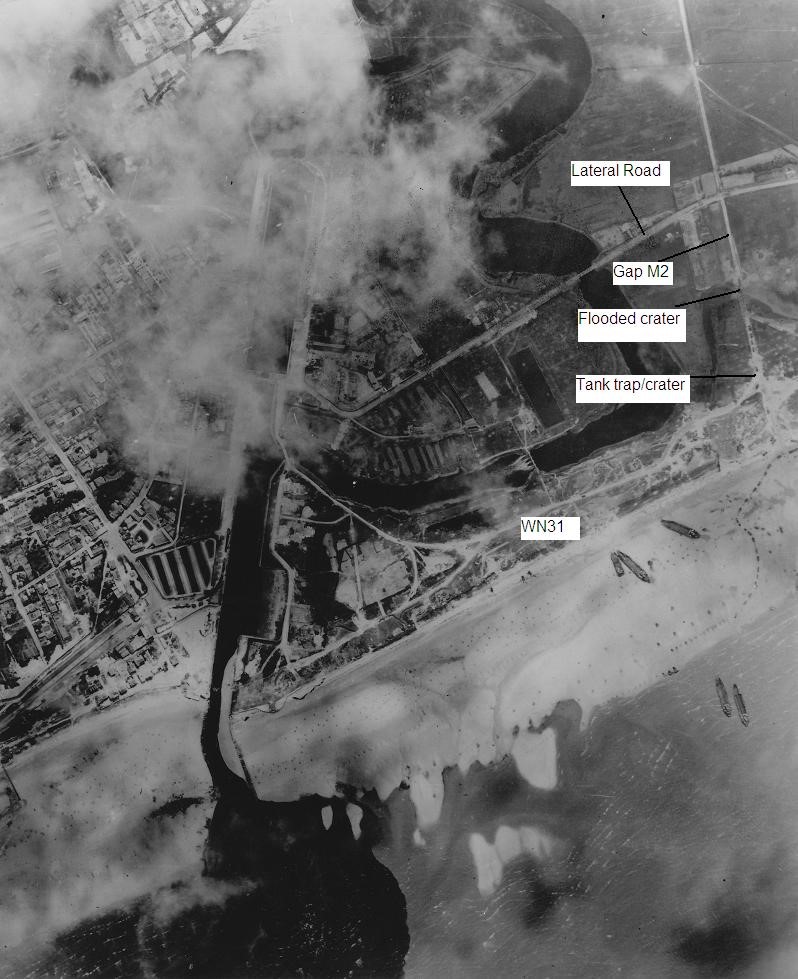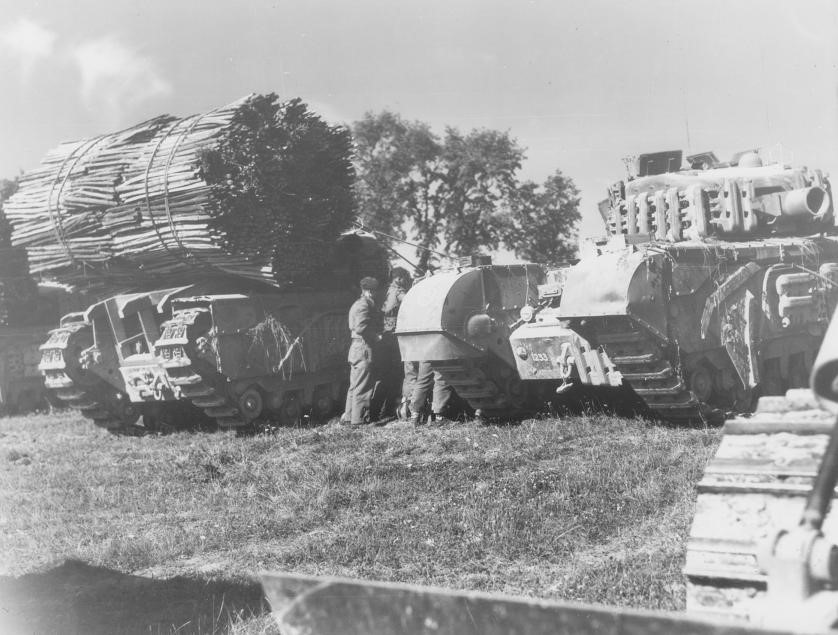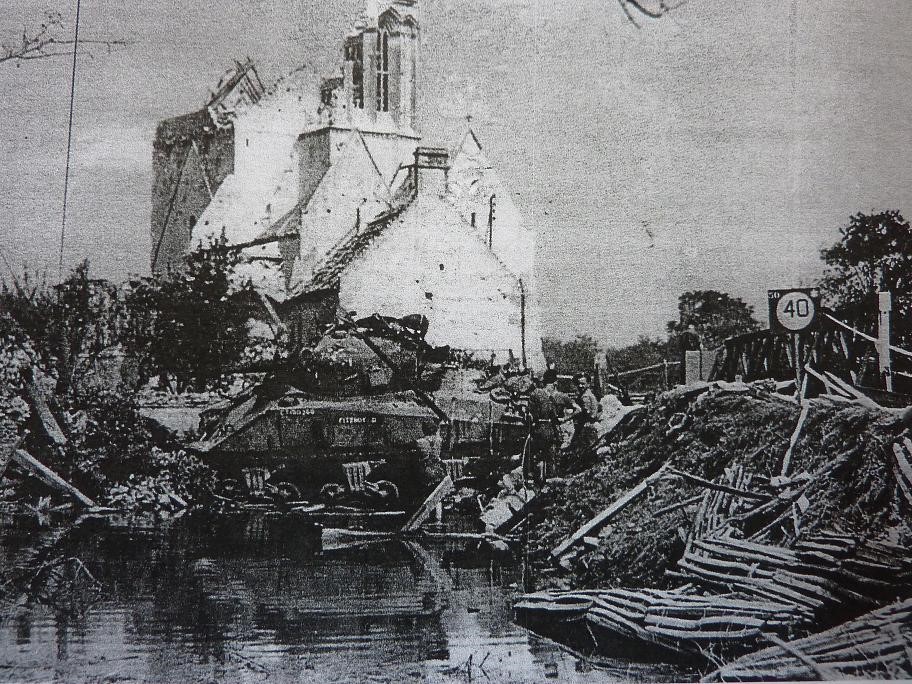The most common device carried by 79th AD AVREs was a fascine. These were used to fill ditches to allow vehicles to cross, or occasionally placed against walls. Here is a well-known photo, the turret at an angle because of the fascine, the commander giving the driver directions 1
Fascines were made from rolls of chespale (chestnut paling fencing), and also from local brushwood, or a combination. They weighed 4 tons, were 12-14 feet long and 8 feet in diameter. This sequence of photos shows 82 Squadron in March 1945 making and mounting fascines 2/16
These were made for the Rhine crossing. A wooden cradle was constructed and placed on the front of the AVRE to support the fascine. 5 foot long bundles of chespale fencing and 3 foot brushwood bundles were delivered from storage at the Assault Park 3/16
Two chespale and one brushwood bundle were slid on to scaffold poles 13 feet long. About 20 of these pole sets were laid on the ground. Often galvanised iron drainpipes were incorporated, as in these pics, to allow water to flow through and prevent the fascine floating away 4
The resulting bundles and pipes were then pulled together and compressed into a cylinder by two AVREs. The bundles were held together with 1” steel wire rope (SWR). The fascine was then secured to the front brackets of the AVRE by more SWR 5/16
Next a steel shackle was fixed and pulled over the fascine which was then attached to a cable secured to a second AVRE at the rear which then pulled the fascine on to the wooden cradle (as in the photo). When this was in position a further cable was attached ….6/
…to brackets at the AVRE& #39;s rear, the shackle removed and substituted for two steel plates bolted together. Plastic explosive was inserted between the plates and bound with tape. A detonator was inserted in the PE and an electric cable from it fed into the turret for firing. 7/
The most famous fascine AVRE was One Charlie from 26 Assault Squadron, which landed on Juno as part of a breaching team. The fascine was to be dropped in a culvert, but a bomb had made a crater at the spot, and the driver, Bill Dunn told me that….8/16
…‘there was so much water..There was also a lot of sand that had blown on top of the water’. As a result neither the size of the crater nor its rim were apparent. ‘I stopped the tank. I said to the sergeant, I can’t see the culvert. To my mind this is where it should be’….9/
..He agreed….’I put the tank into first gear and moved forward. The culvert was a hell of a lot bigger than it had been in the model. The tank just went straight down and the water poured in’. The end result was the tank remained in the crater….10/
..which was filled in to allow traffic to pass over so the exit from the beach could be opened (& #39;flooded crater& #39; in the photo). The tank was finally dug up in 1976 and eventually was displayed behind Juno, where it is today 11/
Another example of the use of fascines was as part of Op Tractable in mid August 1944. 80 Assault Squadron (photo is of 80 or 87 Sqn AVREs) supported the Canadian advance, and on 14th August the 1st Hussars reached the Rouvres river, but the bridge was down 12/
A Sherman bogged attempting to cross by the damaged bridge. 2 Troop, 80 Sqn, arrived and the Troop leader brought the AVREs forward on foot under shell fire and then dropped a fascine in the gap. He took his tank over to test it and three Shermans followed …13/
…..from 1st Hussars. The fourth ran off part of the remaining bridge (‘fourth falls in drink’ says the War Diary), which necessitated another fascine being brought up and dropped. This formed an adequate tank crossing for the remainder of B Squadron. 14/
During the course of the afternoon the bridge was improved by bulldozers and by splitting the fascines, and it turned into an excellent crossing that could take 40 ton loads. This is a well known photo, but the part played by the fascine AVREs is not so well known 15/
Later 1 Troop 80 Squadron were asked by Le Regiment de la Chaudiere ‘if we could do anything about’ a farmhouse holding up the advance and their AVREs ‘destroyed it with six petard shots’! But petards are for another tweet.

 Read on Twitter
Read on Twitter